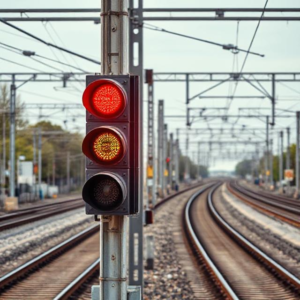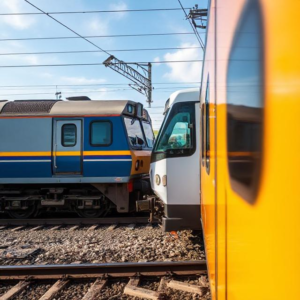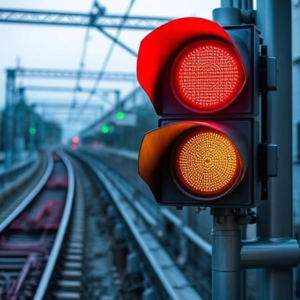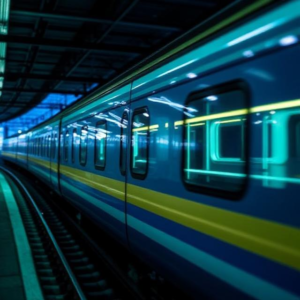Signal Synchronization in Railways
Signal synchronization is all about making sure that the signals (which tell train operators when to stop, go, or slow down) are working together in the right way across the whole railway network. It’s like making sure the lights on a busy intersection all change at the right times so cars can move safely.
Here’s how it works:
- Railway Signals: These are lights or indicators along the track that control train movement. They tell the train driver if it’s safe to go, stop, or slow down.
- Synchronization: The goal is to make sure that these signals are working in a coordinated way. If one signal is green and the next one is red, it could confuse or delay the train. By syncing the signals properly, you ensure smooth and safe train operations.
For example, if a train is approaching a station, the signal ahead of it should turn green only when it’s clear for the train to go. If signals aren’t synchronized, the train might face unnecessary stops, causing delays and inefficiencies.

Why is it important?
- Safety: Proper synchronization reduces the risk of accidents by ensuring trains only go when it’s safe.
- Efficiency: Trains can move more smoothly without unnecessary delays, making the whole system run faster.
Network Interference in Railways
Network interference is when something interferes with the communication or signals that trains use to operate, much like static on a phone call that makes it hard to hear.
There are two types of network interference in railways:
- Signal Interference: Sometimes, electronic signals (like those controlling train movements) can be disrupted. This might happen due to weather, nearby electrical equipment, or even certain types of equipment on trains. When signals get disrupted, it can cause delays, confusion, or unsafe situations.
- Communication Interference: Train crews and control centers need to communicate with each other all the time. Interference can affect radio communications, making it harder for train drivers to hear instructions, or for control centers to monitor trains properly.
Why is it important to avoid interference?
- Safety: If communication or signals are interfered with, trains might not get important safety instructions, which could lead to accidents.
- Smooth Operation: Interference can slow down train services, make it hard to track trains, or cause delays because trains can’t be coordinated properly.
So, to sum up:
- Signal Synchronization ensures that the train signals work together properly so trains can move safely and efficiently.
- Network Interference is when external factors mess with the signals or communication systems, which can lead to delays or safety issues.
Both are crucial to making sure the railway system runs smoothly and safely!
Keywords: Railway Emergency Systems, Railway











